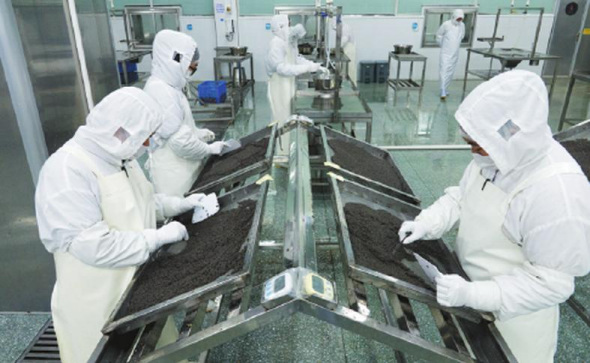
Employees sort caviar at the factory of Kaluga Queen in Quzhou, Zhejiang province. (Photo by Gao Erqiang/China Daily)
Xia and Wang Bing, founder of the company, were part of a research team funded by the Chinese Academy of Fishery Sciences that helped make sturgeon farming possible in the late 1990s.
Li Jun, director of the China Sturgeon Association, gave a more modest prediction. He estimates that by 2020, China will consume 100 tons of caviar every year, accounting for one-third of the world's total. Caviar will be an accessible treat for not only the wealthy, but also the middle-income group, he added.
The association is formed by dozens of companies involved in the business, including sturgeon farming, processing and feed manufacturing. Li noted that there are no more than five companies in China capable of managing a complete supply chain of caviar, which starts from sturgeon breeding and concludes with the final packaging of the delicate roe.
The consumption of caviar began to pick up in China around 2012, but the bud was nipped the next year due to the anti-graft campaign introduced by the central authorities, which prohibits luxury dining and gift giving with public money.
In 2016, as the fine dining scene gradually revived and Michelin launched its first restaurant review on the Chinese mainland, piquing keen interest in restaurants at an average cost of 300 yuan and above, caviar consumption started to gain momentum and soared at a growth rate of 50 percent annually, according to the association.
Traditionally, caviar production depends mostly on wild fishing by countries surrounding the Caspian Sea, primarily Iran and Russia. According to a report by the Food and Agriculture Organization of the United Nations, the worldwide catch of sturgeon reached its peak in 1977 at 32,078 tons, which translated into 2,000 tons of caviar.


















































